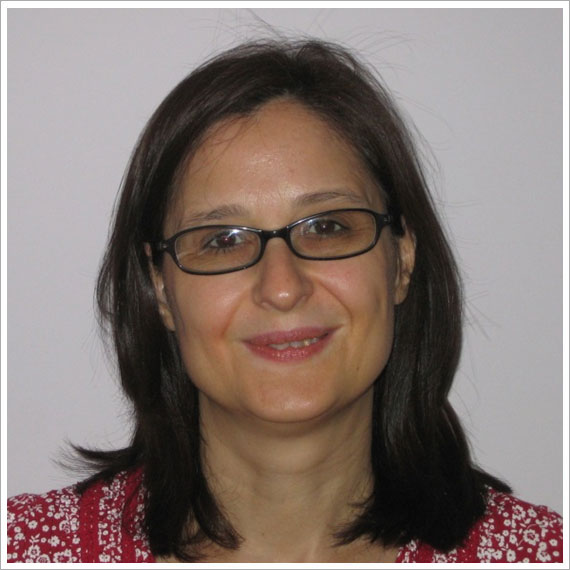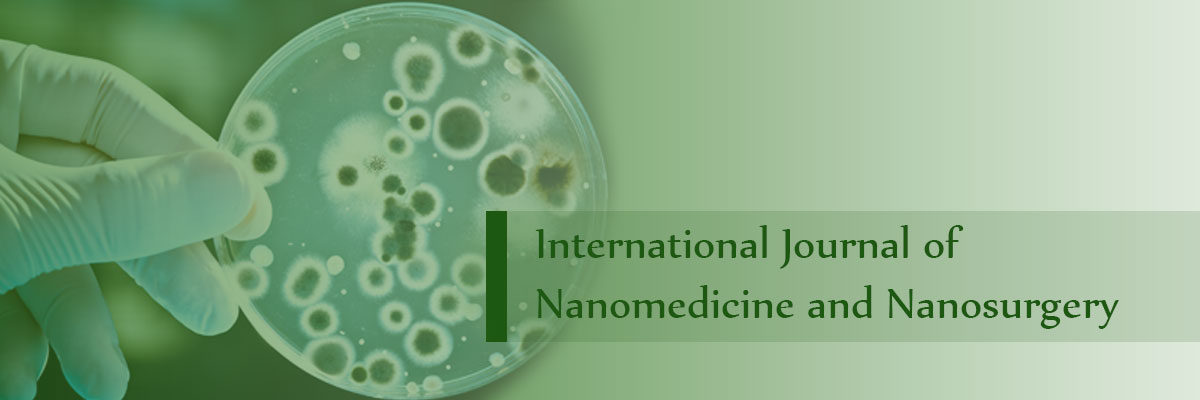Professional Activities:
Summary of scientific career to date, including key achievements
Professor Papakonstantinou Pagona received in 1988 a BSc with honours in Physics from the Aristotle University of Thessaloniki, Greece. In 1994 she received a Ph.D. in Physics from the Queen’s University of Belfast (QUB). This was followed by a series of post doctoral studies at QUB on magneto-optical materials and at the Institute of Electronic structure and Laser, IESL in Crete on fs direct laser micro-deposition, as well as industrial research on SOI technologies at Analogue devices. She moved to the University of Ulster in 1998 as a lecturer embarking on a new research programme addressing the study of the nanomechanical, gas barrier and corrosion properties of disordred carbon films (DLC). Since 2009 Pagona holds a professorship on Advanced Materials leading a group which specializes on the fabrication of nanocarbon materials (carbon nanotubes, diamond nanorods, graphene, 2D nanomaterials and their hybrids ) the comprehensive investigation of their physical and physicochemical properties and the demonstration of these materials in renewable energy and biosensing areas. Pagona is known for her pioneering invention of vertically oriented graphene nanoflakes for electrocatalytic devices. The work has created a new class of graphene based electrodes for a wide range of applications in the electroanalytical, biosensing, energy storage/conversion sectors that could essentially compete their vertically aligned carbon nanotubes counterparts. Other highlights of her research include the elucidation of oxygen groups on graphene oxide for providing durable fuel cells; the discovery of ultrathin diamond nanorods and numerous contributions to the comprehensive understanding of the properties of carbon based materials by probing their local atomic environment using high resolution synchrotron based spectroscopies (NEXAFS, PEEM, XPS, VB).
She has authored over 100 publications, in high profile peer reviewed international journals and holds 3 patents in the area of graphene , one of which has been licensed to a spin out company from the University of Manchester, which is developing intellectual property around the large-scale production of graphene. Pagona has raised funding from various sources including EC (DESYGN-IT), Leverhulme Trust, Royal Society, Royal Academy of Engineering, Nuffield Foundation, industry (Glaxo-Smithkline), INVEST NI, EPSRC and Science and Technology Facilities Research Council as a Principal Investigator. Pagona serves/has served on the following committees: Diamond(UK) and Bessy (Germany) Synchrotron Facilities, EPSRC and EC Panels, Royal Society International grants, National Access Programme (SFI) at Tyndall Institute in Cork, Royal Irish Academy of Engineering and IOP (Institute of Physics) Ireland. She is frequently asked to referee proposals from various research councils in Europe and Asia. She is an invited Fellow of the Royal Chemical Society (FRCS) and has received a Royal Academy of Engineering/Leverhulme Trust Senior fellowship (2011) and a research Fellowship from the University of Ulster (2003). She holds an H index of 27 and her work has received over 3100 citations (according to google scholar: http://scholar.google.co.uk/citations?user=ovn_VJYAAAAJ&hl=en).
Innovation/Commercialisation Activity
I have pioneered the synthesis of low oxygen content graphene nanosheets using a combination of ionic liquid assisted grinding of graphite coupled with sequential centrifugation steps. This patented technique has been licenced to 2-Dtech a spin off company of the university of Manchester, which specializes in innovations related to 2D materials. The company is now partly own by Versarien ltd. which currently runs a pilot project for their large scale production. The signing of a commercialisation licence (2013) and securing world and European patents (US 20140044968) highlights the value of this invention. I have 5 patent applications in the area of graphene and 8 invention disclosures. I have collaborated with industry through Proof of Principle project (2-DTech 2013-), Co-operative Awards in Science and Technology/ DEL PhD studentship (GlaxoSmithKline Ltd 2005-2009) and FP6 programme DESYGN-IT: Design Synthesis & Growth of Nanotubes for Industrial Technology (2004-2008) and as R&D Engineer at Analogue Devices in Belfast (1998).
Professional Service Accomplishments
- Invited Fellow of the Royal Society of Chemistry (FRSC) through ‘Leaders in the Field’ scheme for contributions in the field of nanomaterials and nanoscience.
- Recipient of Royal Academy of Engineering/Leverhulme Trust Senior fellowship (2011) and a research Fellowship from the University of Ulster (2003).
- Member of the evaluation panel for the EPSRC, European Framework Programme for Research (FP7) & Horizon 2020 and Helmholtz-Zentrum Berlin (HZB) Light Source.
- Referee for the evaluation of Grant proposals for EPSRC, Technology Strategy Board, Research Councils in China (NSFC), Qatar (Qatar National Research Fund (QNRF), The Dutch Technology Foundation STW funds, the Foundation of Polish Science, the Czech Science Foundation, National Access Programme (NAP) of Tyndall National Institute and the American Chemical Society Petroleum Research Agency, USA.
- Regular referee for scientific journals in the field of materials and physical chemistry: Advanced Materials, Small, Nanoscale, JPCC, J. Mat Chem., JES, Chem Comm., ACS catalysis.
- Committee member of Diamond Light Source I06-I07 Users group, (2008-2012 ); college C3a of Helmholtz-Zentrum Berlin (HZB) Light Source (2012- present ); electorate body for the promotion of academic members of staff of the Physics Department of the Aristotle University of Thessaloniki, Greece; Royal Irish Academy on Chemical and Physical Sciences (2007-2010); Royal Society Panel member on International grants (2006-2009); Institute of Physics in Ireland.
- Chair on session “Solar Energy” of UK-India joint workshop on “Functional and Energy materials, Manufacturing and structures”, FAEMMS 2013 University of Hyderabad 25-26 March 2013;
- Scientific organizing committee Member for the Royal Chemical Society Faraday Symposium on “New Advances in Carbon Nanomaterials”, 1-3 September 2014-London; Co-organiser and Chair of Symposium L”Large area electronics from carbon nanotubes, graphene and nanowires”, MRS Fall Meeting Boston USA , November 30-Dec 4 2009 .
- Regularly invited at leading national and international meeting.
I have published over 100 articles in peer review journals. Currently I hold a research H index of 27 and my work has received over 3100 according to google scholar citations.
Invited Oral Presentations at International conferences/workshops
- “2D materials for energy storage and conversion applications”, Nownano conference 2014 June 9-11 2014, Cheshire UK.
- “2 Dimensional materials as Non Precious Electrocatalysts for energy applications” Condensed Matter Physics Seminar, 10 January 2014, Physics Department, Lancaster University.
- “Non Precious Catalysts for fuel Cells”, Indo-UK joint seminar on Functional and Energy Materials, Manufacturing & Structures (FAEMMS-2013) 25 - 26 of March 2013, University of Hyderabad, Gachibowli, Hyderabad, India.
- “Graphene for Biosensing: Opportunities and Challenges” Med-Tech Innovation Conference & Exhibition 2012 & Med-Tech Innovation START-UP/SME CLINIC, 11 September 2012 , Brunel University, London, UK
- “High resolution X ray photoelectron and Near Edge X- ray Absorption Spectroscopy studies on graphene and carbon based nano-materials” I09 Workshop on Atomic and Electronic Structures of Surfaces and Interfaces, 9-10 July 2012, Diamond Light Source, Oxfordshire, UK
- “Probing the thermal reduction of graphene oxide with synchrotron based spectroscopies” Third Joint BER II and BESSY II User’s Meeting, 30 November to 2 December 2011, Helmholtz-Zentrum Berlin, Campus in Wannsee and Adlershof.
- “Graphene for energy applications”, International Workshop on Health and Environment Safety of nanotechnology enabled consumer products, 21-22 September 2011, York, The Food and Environmental Research Agency.
- “Metal free Graphene as electrocatalyst for fuel cells” Carbonhagen 2011, 2nd Symposium on graphene and carbon nanotubes, 23-24 August 2011, Copenhagen, Denmark.
- “Biosensing with graphene”, Symposium P, European-Materials Research Society, E-MRS Spring meeting 2011, May 9-13, Nice France.
- “Oxygen rich graphene support could lead to durable fuel cell catalysts”, Symposium X European-Materials Research Society, E-MRS Spring meeting 2011, May 9-13, Nice France.
- “Graphene for electrochemical biosensors and fuel cell devices” Carbonhagen 2010, First Symposium on graphene and carbon nanotubes, 5-16 November 2010, Copenhagen, Denmark.
- “Biomolecular sensing using graphene”, 2nd International conference from nanoparticles and nanomaterials to nanodevices and nanosystems IC4N 2009, 28 June-3 July 2009, Rhodos, Greece.
- “Graphene for electrochemical detection of biomolecules”, NN09 – 6th International Conference on Nanosciences & Nanotechnologies, 13-15 July 2009, Thessaloniki, Greece.
- “Electrochemical sensing using carbon nanotubes and graphene”, Third International Summer School on Nanosciences & Nanotechnologies, 11-17 July 2009, Thessaloniki, Greece.
- “National Centre for Electron spectroscopy and surface Analysis, NCESS, Users meeting, 12 January 2009, Daresbury, UK.
- “The use of Mo6S9-xIx Nanowires in Biological Detection”, 1st International conference from nanoparticles and nanomaterials to nanodevices and nanosystems, Symposium NBM-2, IC4N 2008 16-18 June 2008, Halkidiki Geece
- 14th International conference on Solid Films and Surfaces, 29 June-4rth July 2008, “Bio-functionalization and sensing” Symposium, ICSFS 2008 Dublin.
- “Chemical Analysis of functionalised graphene and diamond nanorods” National Centre for Electron spectroscopy and Surface Analysis, Users meeting, NCESS, 12 January 2009, Daresbury, UK
- “Bio-assembled Nanocircuits of MoSI Nanowires for Highly Sensitive Bio-electronic Detection”, Hot Nanotopics 2008, Workshop on Transition Metal / Chalcohalide Nanostructures TMCN 2008, 23-20 May 2008, Portoroz, Slovenia.
- “Carbon Nanoflakes - Superb Electrocatalytic Activity”, Materials Research Society conference, MRS 2008, Symposium P, March 24-28 2008, San Franscisco, USA.
- “Carbon Nanowalls: Superb Electrocatalytic Properties and Irradiation Induced Magnetism”, 17 annual workshop, Surrey Ion Beam Facility, 18 March 2008, Surrey, UK.
- “X ray photoelectron spectroscopic studies on carbon nanostructures”, National Centre for Electron spectroscopy and Surface Analysis, NCESS, Users meeting, 12 November 2007, Daresbury.
- “Degree of alignment and electronic structure of functionalized carbon nanotubes probed by near edge X-ray absorption fine structure spectroscopy“, Symposium N of the International Conference on Materials for Advanced Technologies (ICMAT 2007), 1-6 July 2007, Singapore.
- “Electronic structure of plasma functionalized carbon nanotubes probed by Synchrotron based X ray absorption spectroscopy”, NATO ASI, on Functionalized Nanoscale Materials, Devices, and Systems for chem.-bio Sensors, Photonics, and Energy Generation and Storage, June 4-15, 2007, Sinaia, Romania.
- “Carbon nanotube arrays: A novel platform for direct Bioelectronic sensing”, NATO ASI on Functionalized Nano-scale Materials, Devices, and Systems for chem.-bio Sensors, Photonics, and Energy Generation and Storage, June 4-15 2007, Sinaia, Romania.
- “Direct Detection of Specific DNA binding using carbon nanotubes”, Advanced Nano Materials 2007, An International Conference on Experimental Condensed Matter Physics, 8-10 January 2007, IIT Bombay, India.
- “Inorganic MoSI nanowires and carbon nanotubes: Novel platforms for direct bio-electronic and optical sensing” International Symposium on Nanotechnology in Environmental Protection and Pollution, ISNEPP 2007, 11-13 December 2007, Florida USA.
- “X ray photoelectron spectroscopic studies on carbon nanostructures”, National Centre for Electron spectroscopy and surface Analysis, NCESS, users meeting, 12th November 2007, Daresbury.
- “Degree of alignment and electronic structure of functionalized carbon nanotubes probed by near edge X-ray absorption fine structure spectroscopy”, The International Conference on Materials for Advanced Technologies (ICMAT 2007), 1- 6 July 2007, Singapore.
- “Direct detection of specific DNA binding using carbon nanotubes”, International Conference on Advanced Nanomaterials 2007, Jan 8-10 Indian Institute of technology Mombay, India.
- “Carbon nanotubes: Growth, chemical and plasma Functionalization, spectroscopic verification and use in bioelectronic detection” International conference of Micro and Nanotechnologies, ICMNT 2006, 19-23 November 2006, Tizi-Ouzou Algeria.
- “Interfacing Biological Molecules with Carbon Nanotubes for Bioelectronic sensing”, organized by IOPI/Engineers Ireland, “Nanotechnology: an encounter between Physics and Engineers”, 14 November 2006, Dublin, Ireland.
- “Carbon nanotube research at the Nanotechnology Research Institute of the University of Ulster”, Nanodays 2004, 29-30 October 2004, CBEN, Centre for Biological and Environmental Nanotechnology, Rice University, Houston, Texas.
- “Carbon nanotube research at the Nanotechnology Research Institute of the University of Ulster”, Biosensor, Nanotech and Imaging Workshop, 25-27 Oct 2004, Texas A&M, College Station, USA.


